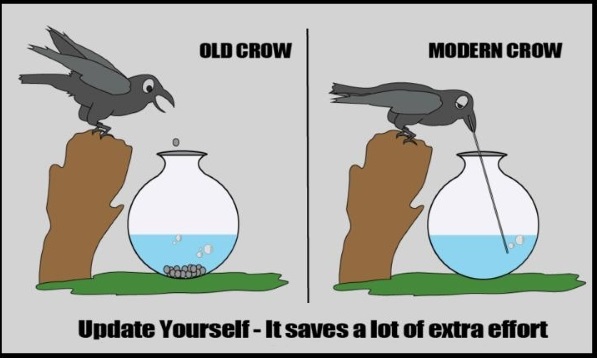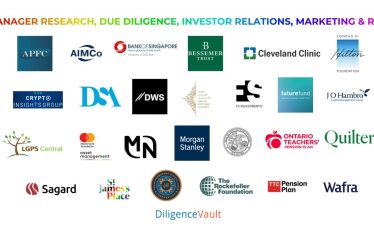Defining the Digital Diligence Moment: When the investment management industry no longer depends on emails, multiple Word documents, and PDFs to exchange diligence information, and instead asks,
“Can you DV it?” i.e. when DiligenceVault becomes a verb 🙂
Why digitize?
Digitization makes information storage structured, access easy and analytics possible. It enables institutional memory. Digitization constitutes investment for the future as paper disappears, saving significant time spent in transcribing information.
One school of thought from asset managers posits that if information were digital, flowed faster, and were easier to work with, then the frequency of diligence would increase, resulting in an even higher workload. However, we would argue that there is a counter balance to this concern, which is investors’ inclination to create minimal disruption for their managers.
Another school of thought from a diligence practitioner hypothesizes that digital information might actually result in smarter and more focused diligence. Once set up, investors could look for outliers to expected norms (KPI’s if you will) based on the data. A large enough universe allows for the creation of data sets for expected outcomes and deviations by strategy, which would help to highlight potential concerns sooner.
Is digitization alone enough?
Digitization needs to offer significant ancillary benefits in addition to convenience in order to drive a change in behavior and provide enough incentive to disrupt the status quo. And it does. Below are three fundamental drivers:
- Priority #1: Stay connected to key information
How often do we lose sight of information critical for an investment decision that is on the 15th page of a document, but we can’t remember where, and Ctrl+F just doesn’t work? Having a mechanism to isolate relevant information from noise, and an alerts mechanism to highlight items that require attention would help investors and asset managers stay connected with critical data points. - Priority #2: Avoid costly mistakes
Manual processes are a source of mistakes. When many individuals are involved, the scope multiplies for mistakes costing time, damaging reputation and increasing frustration. Along with digitization, automating manual processes around diligence would minimize such mistakes, enhancing rigor and repeatability in the process. - Priority #3: Build institutional memory
In the investment management industry, the average job tenure is 3 years, while both the duration of an investment and the length of the resulting relationship are much longer. Therefore, it’s necessary to create institutional memory via a centralized storage capability with robust audit trail around the information that serves as the foundation for future decisions.
The case for a digital network
The above benefits are largely specific to any individual firm, and they have a meaningful impact on both alpha potential and the bottom line. However, the real case for digital diligence is its sweeping transformational impact on the industry when both parties to the diligence come together. The resulting network can achieve two things:
*** Standardization:**
This is a romantic ideal, or a state of perfection, given how much time the industry spends on bespoke diligence. But to make progress in this general direction, the fundamental shift in behavior will only happen when both sides have skin in the game. There is potential for parts of fund diligence to be standardized in the same way that most securities have fixed attributes that an investor can analyze. The issuer of the security can also efficiently manage the process given consistent attribute definitions. At DiligenceVault, we have embraced the quest with digitization of AIMA, ILPA, HFSB, and UNPRI questionnaires. Moreover, as asset managers move towards outsourcing back and middle office functions, this standardization may be easier to achieve as data starts to funnel in from a smaller number of providers.
But at the same time, we understand that there’s a need for people to focus on their own ‘secret sauce’ or unique approach. Different investors have different fiduciary profiles resulting in different levels of diligence needs ranging from quarterly touch points, to biannual cycles. So the network must allow for customized experience.
*New behavior of testing decisions with data:
Quite a few investment decisions depend on intuition and human recollection of myriad information and data points.
“You can trust your gut when (1) you’re in a predictable environment, with (2) regular practice and (3) immediate feedback on your judgment. If those conditions aren’t met, don’t trust your intuition.” – Adam Grant
In the investment world, these three factors do not always align, so it would be fruitful to have data available to allow you to test your intuition. Properly built data could be provided daily, weekly, or monthly, allowing the investor to focus on the risks they care about and avoid chasing issues or topics that are not in evidence.
Aggregated data would allow asset manager to monitor how they are positioned relative to peers, what are industry best practices, as well as how their outsourced provider is performing for them relative to others. Regulatory filings of advisers (such as Form ADV) are already providing some of these insights, paving the way for a greater focus on network analytics in the industry.
Who should underwrite the shift to digitization?
Even though the investment management industry is two-sided (allocators/end investors and advisors/fund managers), the business model has often allowed one side to participate for free. This creates an imbalance in expectations and a misalignment of interests.
Both sides must underwrite the transition to digitization, as both are deriving tremendous benefits. When both sides have incentives aligned, they can pool their imaginations and best ideas to build something new and better, something that didn’t exist before. And for the new environment to constitute a sustained and equitable advantage for the industry overall, it simply cannot be one sided.
And this transition is beginning to happen. In the holiday spirit of Thanksgiving, there’s much to be thankful for, including: the thought leaders who lead the charge to move their organizations forward; and the industry organizations that encourage advancement of the industry overall with best practices; and the latest technologies that underpin the transition to digitization.
Thank you, Jay Nicholas for your review and edits on this article.



